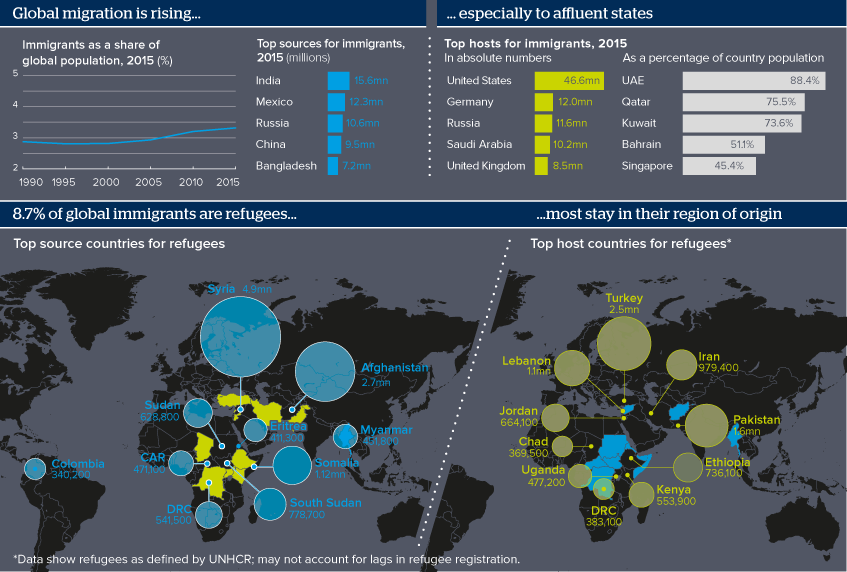Rising global migration stirs tensions
Politicised public discourse on migration undermines efforts to manage the phenomenon
Source: UN Trends in International Migrant Stock: The 2015 Revision, World Population Prospects: The 2015 Revision, UNHCR Global Trends Forced Displacement in 2015
Outlook
Migration has always been a feature of human history. In recent years, the ease of travel and communication, the global recession and new conflicts have contributed to rising numbers of migrants across the globe: to 244 million in 2015 from 173 million in 2000, rising to 3.32% of the global population from 2.82%.
Most migrants come from middle income countries, not poor ones. It is in these countries that people have enough information, education and money that they can pursue a life abroad.
Although migration dominates political debates in West European states, their share of immigrants as a percent of their native-born population is smaller than that of other states. Even the refugees, whose harrowing journeys into Europe propelled these debates, mostly stay in their regions of origin.
Impacts
- Migrant remittances help improve economic conditions in the countries of origin; remittances usually exceed official development assistance.
- In host countries, migration can mitigate the impact of population ageing, but cannot reverse it.
- Managing the discourse on migration will be crucial in mitigating tensions between the native-born and migrants.
See also
- Gulf states’ austerity will hit foreign workers - Dec 12, 2016
- Italy may not get further EU support in migrant crisis - Sep 5, 2016
- More graphic analysis
